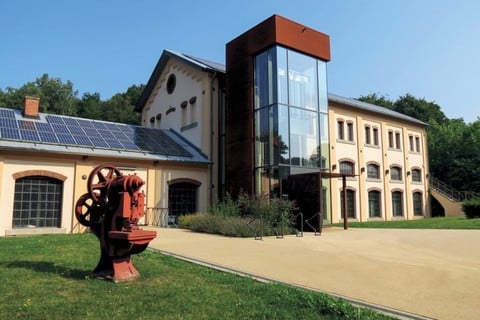
Properties for Sale in Steinfort: Discover Luxembourg Differently
Living in Luxembourg is an accessible dream. The town of Steinfort is the perfect illustration of this.
A clever mix of nature and culture, discover this small town in the Grand Duchy, located in the west of the country.
Between atypical properties and more modest dwellings, the flat or house that suits you is certainly in the heart of Steinfort.
The property market in Steinfort
Would you like to join the 4,700 inhabitants of Steinfort and buy a property in the town? This friendly town with an interesting economic dynamism is a great location for families, but also for young people looking for a good place to start their professional life.
The price per square metre in Steinfort for an already built flat is 7,473 euros. The average price for a VEFA (“vente en l'état futur d'achèvement” or “sale off-plan”) flat is 7,645 euros.
However, if you are looking for a property to rent in Steinfort, this will be calculated on an average of 19.98 euros/m2.
Don't take a leap in the dark and choose to contact a real estate agency in Steinfort to find the property that suits you. A real estate professional will be able to understand your needs and assist you in this new adventure, in order to be successful in your move to Luxembourg.
Why live in Steinfort?
- Education
In Luxembourg, education has a very special place. Steinfort is no exception to the rule and offers a range of structures dedicated to the development of children. Education is fundamental for the municipality, which offers a system that favours comfort and learning by controlling, in particular, the distribution of the number of pupils per class.
School is free and compulsory for children. A so-called basic education, divided into 4 distinct cycles, provides a framework to teach those aged 4 to 11.
There are no less than 4 schools in the city, divided according to the level of the students, from primary to complementary cycle. There are also two supporting structures (maisons-relais) to help the pupils during their schooling.
- Environment
Today, Steinfort aims to be more modern with infrastructures that allow to take advantage of the technological progress to boost its economy.
It is now looking to the future and is making a point of combining climate protection and growth. The municipality of Steinfort has signed the Climate Pact, which commits it to thinking about its investments and infrastructures in terms of green solutions.
A nature reserve, bicycle paths and environmental awareness are among the actions that aim to instil an ecological and responsible impetus in the population.
The environment is directly linked to a strong social base. The moderation of rents, as well as the creation of a social grocery shop, provide an interesting alternative for the most modest families to relearn how to live together and show solidarity.
Numerous aids have been put in place to help families in difficulty to benefit from the city's wealth. The social office helps the most precarious to find solutions adapted to their situation.
- Social life
The life of the inhabitants of Steinfort is punctuated by associative events, in particular the “café des langues” which aims to bring together all the communities to learn and exchange in Lëtzebuergesch. This is ideal for those who wish to move to Steinfort and who do not speak the national language.
One could also mention the pétanque club, which regularly organises friendly meals to get to know each other and share a unique moment, or the gala concerts which enliven the town several times a year.
The history of Steinfort
Steinfort, whose name probably comes from an old ford over the river Eisch, can look back on a long and interesting history. Archaeological findings show that the area was already occupied in Celtic and Roman times.
The town of Steinfort boasts a thousand-year-old history and, just like the other municipalities in Luxembourg, it is marked by the Roman occupation.
Steinfort is close to the Belgian border, in the west of the Grand Duchy.
In order to understand its history, it is necessary to divide it into two distinct periods.
In the 17th and 18th centuries, it came under the aegis of France, but remained economically independent, in particular because of a developed road network that allowed it to trade with its European neighbours.
In the 19th century, Steinfort became part of Belgium following the Treaty of London, signed in 1839, which delimited its borders. The economy was then based on the buoyant sector of the time: the steel industry. Its factory experienced a historic output from 1918, i.e. after the end of the First World War.
